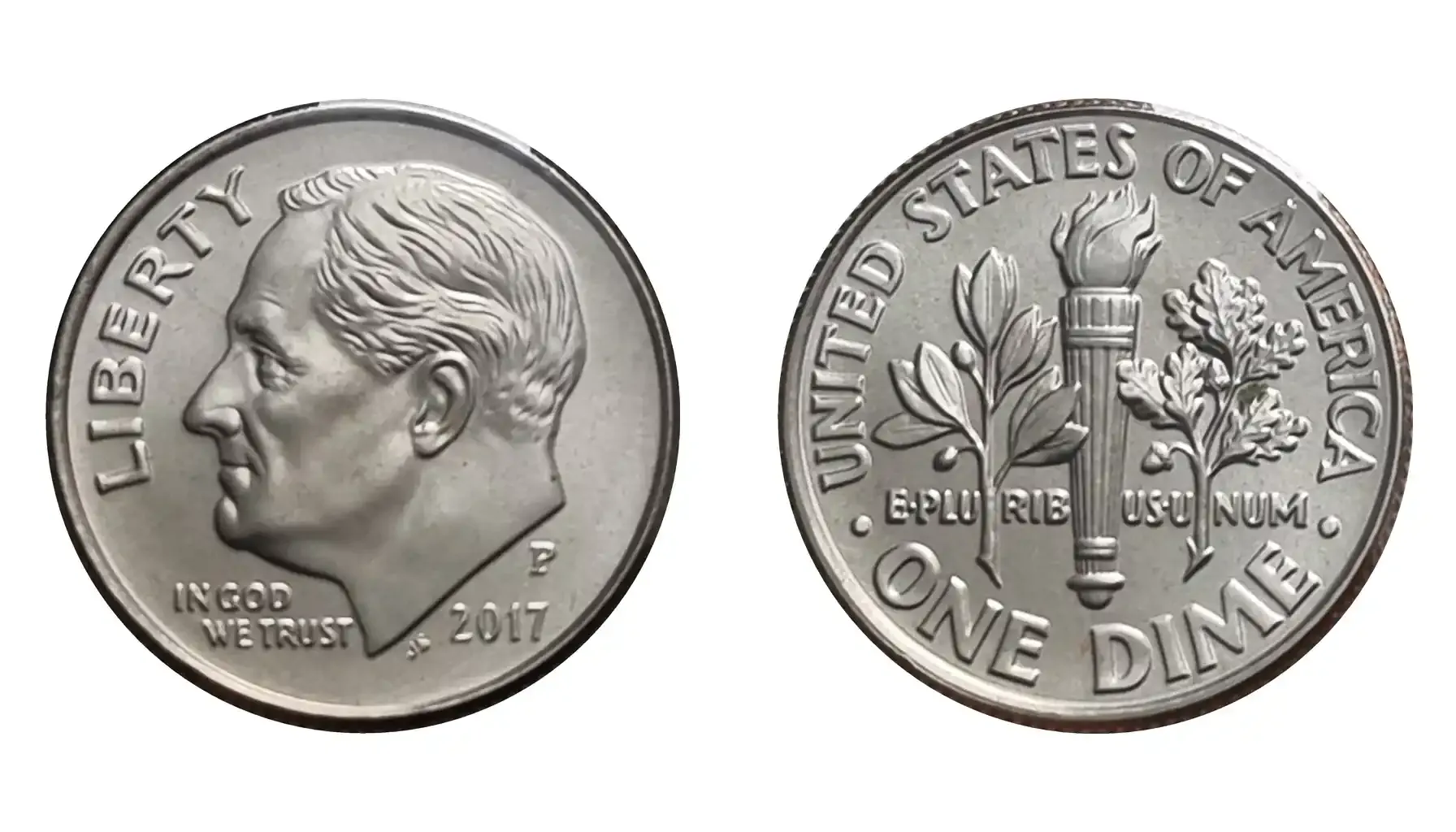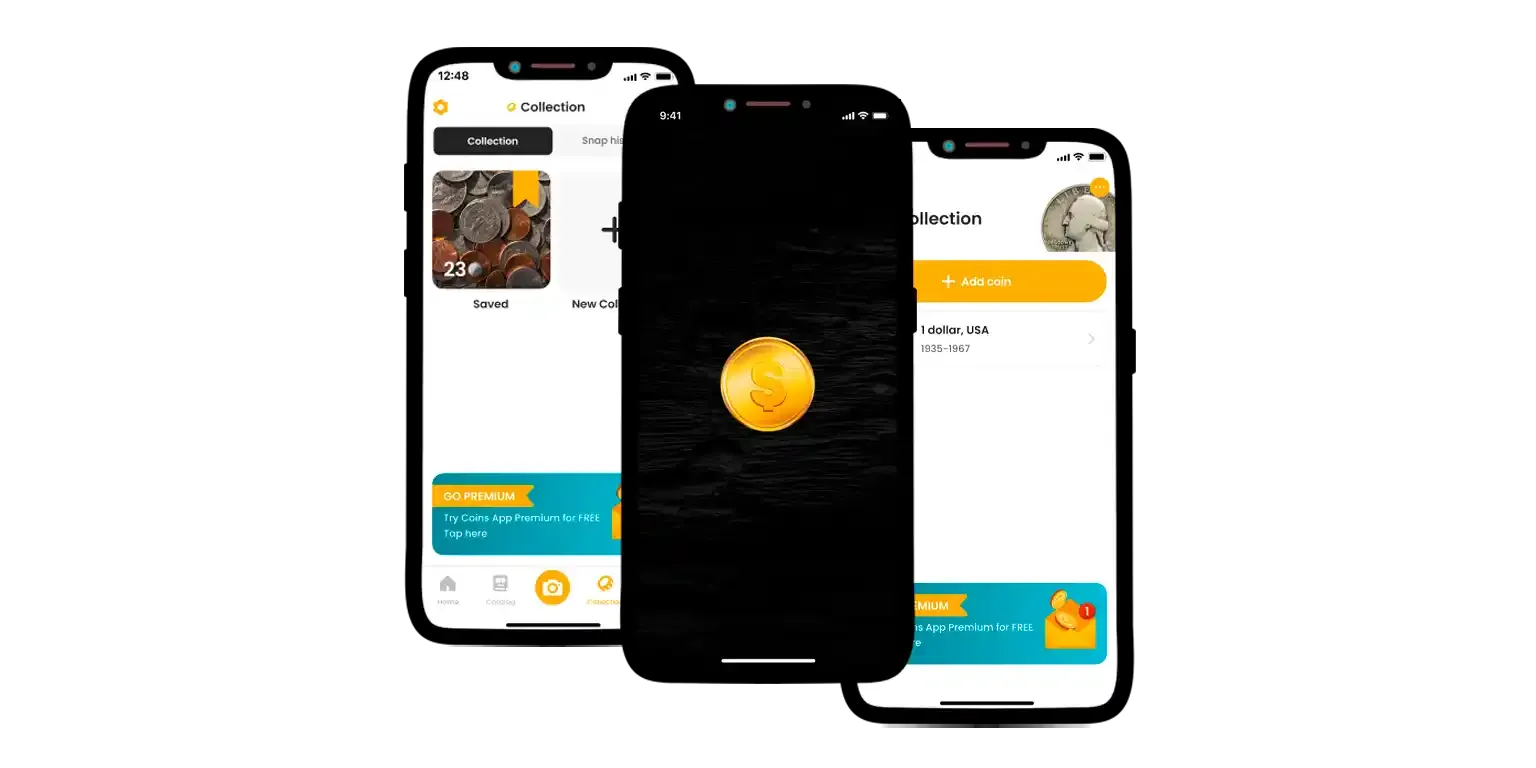Contents:
For a non-collector, the 1977 US dime may seem just like any other coin, but for numismatists, it is a very special creation that may reveal its potential through errors and fine flaws. While most might overlook these unique deviations in loose change, only a person with a keen eye and a great interest in numismatic creations may spot a treasure and incorporate it into their collection.
In this material, we are going to explore the 1977 dime no mint marks, as well as possible flaws and deviations. Besides, do not miss a chance to learn more about assessment processes and how to check coin value on your own.

Generally About What the 1977 Roosevelt Dime Is
As such, the 1977 Roosevelt Dime is a part of a series of dimes originally created in 1946 to honor President Franklin D. Roosevelt. This coin series, which gradually replaced the Winged Liberty Head (or Mercury) dime, features a design that has not changed for years.
Roosevelt's picture on the obverse commemorates his administration, especially the founding of the March of Dimes to fight polio. The reverse design, which was also created by John R. Sinnock, depicts a torch with an oak and olive branch on either side.
Designer | John R. Sinnock |
Composition | Copper-Nickel сlad (outer layer: 75% copper, 25% nickel; core of pure copper) |
Weight | 2.27 grams |
Diameter | 17.91 mm |
Thickness | 1.35 mm |
Edge | Reeded |
Mintmarks | No mintmark (Philadelphia), “D” (Denver), and “S” (San Francisco - for proof sets only) |
Total Mintage | Philadelphia: 596,384,000 Denver: 388,496,000 San Francisco Proof: 3,251,152 |
As usual, Philadelphia, Denver, and San Francisco are the three major US Mint locations where the dimes (and other coins, too) were struck in 1977. Philadelphia coins do not bear a mintmark, while Denver and San Francisco (i.e., proof versions) instances feature a tiny "D" or "S" respectively. Silver was no longer used in dimes after 1964, hence these coins are composed of copper and nickel only.
Some errors and variants may increase the 1977 dime value, even if most of them are worth their original price. Filled mintmarks, die cracks, off-center strikes, and 1977 no mint mark dimes represent probably the most common minting anomalies that could turn an ordinary coin into a valuable collectible.
Here is another interesting numismatic article for you: American Women Quarters.
The Most Common 1977 Dime Errors and Varieties
Coin variants and errors do increase their value, and this usually happens when a fine coin may boast fine deviation. This is also true for the 1977 Roosevelt Dime, which is extremely valuable in numismatic circles. The most prevalent errors and types to watch out for are:
Errors | Characteristics |
Off-Center Strikes | Sometimes, coins may be improperly aligned in the counting press, and this leads to a section of the design being chopped off. |
Clipped Planchets | When the blank coin planchet is incorrectly punched from the metal sheet, there appears a curved or straight "clip" on the coin. This is known as a clipped planchet error. |
Die Cracks and Cuds | Die cracks are usually caused by fractures in the die that strike the coins, which show up as more developed lines or blobs on the surface. Should an area of the die break off, a raised, blank region appears on the coin, creating cuds. |
Double Die Errors | As a rule, misalignment during the hubbing process causes doubled appearance in such features as the date, typography, or details. |
Misaligned Dies | When one of the dies used to strike the coin is a little off-center, the design appears skewed. This is known as a misaligned die mistake. |
Weak Strikes or Missing Elements | Weak strikes occur when there is not enough pressure used during the minting process to produce coins, which leaves these instances with missing details. |
No Mintmark Variety (Philadelphia) | As is typical for this year, dimes struck in Philadelphia in 1977 do not bear a mintmark at all. It is crucial to make clear that this is a standard feature yet some collectors mistakenly think it is an error. |
The Value of 1977 Dimes
The 1977 dime worth is usually determined by a number of aspects, including its mintmark, condition, and presence of any significant deviations. Some factors can greatly increase the value of 1977 dimes, even if the majority are common and worth their face value of 10 cents in circulating condition only.
Circulated 1977 Dimes: Millions of coins were created in Denver (D) and Philadelphia. Since wear lessens their attraction to collectors, circulated examples usually only keep their face value of $0.10.
Uncirculated 1977 Dimes: Uncirculated dimes are extremely rare since these are undamaged and retain their original mint brilliance. Coins graded MS-65 or higher (by NGC or PCGS only) can fetch higher prices, which are usually between $1 and $5.
1977-S Proof Dimes: As we have stated before, proof dimes were made only at the San Francisco Mint. These coins are valued for their superb detail and mirror-like finish, and they usually come in limited-edition proof sets. Value range falls between $1 to $3 on average.

Error Coins and Varieties: A 1977 dime's value can be considerably increased by error coins. While minor errors are estimated to be worth $5 to $20, the major samples may gain up to $100 or more. This is how the 1977 dime error value is formed.
Collecting Tips for the 1977 Dime
For numismatic enthusiasts, collecting the 1977 Roosevelt Dime can be fun, yet this can be missed unless one is prepared. Here are some recommendations to help you safely gather these coins, check their value, and cherish your collections for years to come.
Understand Grading
One of the most important components of your coin's value is its condition. Dimes in uncirculated (i.e., mint-state) conditions are more valuable than those in circulated ones. According to the Grading Scale, coins are ranked from PO-1 (which is poor) to MS-70 (which is a perfect mint state). Fairly enough, coins that show no wear and are in mint condition will be valued more.
Use a Coin ID Scanner as Your Personal Numismatic Assistant
You can easily identify and validate your 1977 dimes, or any other like the 2022 Nina Otero-Warren quarter, with the Coin ID Scanner app, which is an innovative tool to speed up your collection processes for good. After scanning your coin via the phone's camera, this technology offers comprehensive details about its date, mintmark, and any possible flaws. By the way, it can serve as your own numismatic helper for you not to overlook anything important but be guided all the way.

Opt for Proof Coins
Produced at the San Francisco Mint, proof coins are crafted with a highly polished finish, especially for collectors. These coins are regularly seen in proof sets that the US Mint distributes on its own. To get the most out of your proof coins, look for ones that are in immaculate condition (rated PR-70). Since proof coins are occasionally found in sets, search for complete sets that might include the 1977 dime. These sets are typically worth more than individual coins, though.
Maintain Your Coins in Good Condition
To keep your dimes 1977 valuable, store them in protective holders, flip cases, or plastic capsules to keep them safe from dirt, moisture, and other damaging materials. Never clean your coins as this can dull or scratch their surfaces, but handle them by their edges to prevent fingerprints.
Build a Complete Set
For those who wish to construct collections, think about purchasing a full set of Roosevelt dimes, which includes the 1977 versions from the three mints (Philadelphia, Denver, and San Francisco) simultaneously. Over time, this will increase the variety and value of your collection.
Embrace the journey of coin collecting with passion and curiosity. This will help you one day, indeed.



